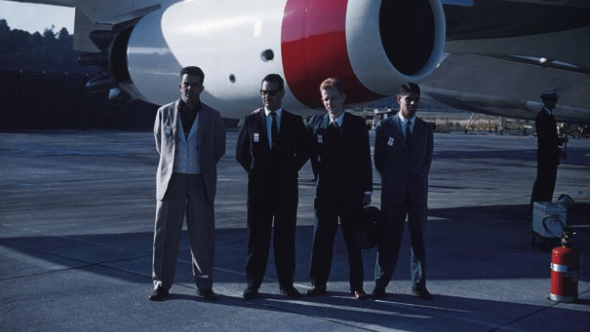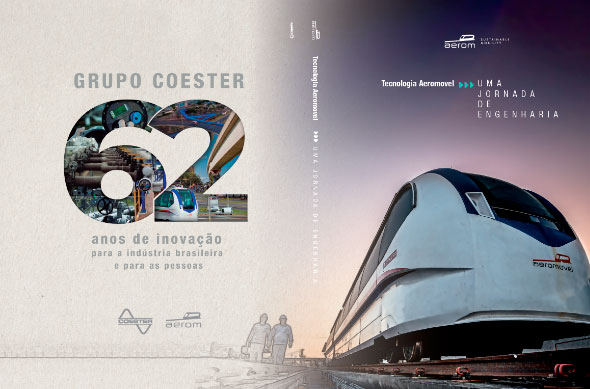
In 1959, during a dialogue held in the courtyard of Seattle Airport (USA), with businessman Rubem Berta, President of Varig at the time, he coined a phrase that ended up motivating the greatest challenge in Oskar Coester’s life. Bertha said:
“It will no longer help to increase the speed of the plane. The problem is getting to the airport.”
Due to his qualifications and experience, Coester, at that time, was part of the team that participated in the “air transport revolution” that took place in the 1950s. The stimulus generated from the dialogue with Berta led Coester to his next big step towards innovation: the technological solution capable of improving and qualifying urban transport in a scenario of cities increasingly congested by traffic.
This challenge gave rise to the innovative technology of the Aeromovel System, which has been consolidating itself globally as a solution in projects that change the appearance of urban mobility in cities.

Oskar Coester realizes that “distances are no longer measured in kilometers, but in time”. This perception would guide him throughout his life.
Construction of the first prototype for a passenger transport system powered by pneumatic propulsion.
England grants the first patent to Coester. Later, other countries such as Japan, Germany, United States, France, Brazil, and China followed suit.
Tests and evaluations ratified by partners indicate the technical and economic feasibility for the use of the technology in medium-capacity urban transportation systems.
The behavior of the vehicle is evaluated over distances above 650 meters and on terrain with curves and inclines, in order to evaluate controllability, stop precision, and energy efficiency.
The test vehicle operates during the Hanover Fair in Germany.
The same vehicle is implemented at Expointer in Esteio/RS.
The Ministry of Transportation approves the construction of the pilot line in Porto Alegre/RS.
The first vehicle module for 300 passengers undergoes resistance, safety, and performance tests.
The pilot line begins construction along Avenida Loureiro Silva in downtown Porto Alegre.
Construction of the first articulated vehicle and the end of the partnership with EBTU.
UFRGS and the Institute of Technological Research in São Paulo conduct the first performance tests of the Aeromovel system.
The first trip in Porto Alegre takes place.
The exterior propulsion system is implemented. Inspired by sailboats, it is capable of controlling pressure, direction, and speed, providing safety to the system.
The Aeromovel system receives authorization to transport passengers in demonstrations.
The project receives technological viability acceptance for the completion of the works.
Brazilian technology is implemented in the Indonesian capital, Jakarta.
The International Airport Line in Porto Alegre is inaugurated as one of the mobility works for the 2014 World Cup.
Aeromovel wins the international bid at Guarulhos Airport to connect terminals 1, 2, and 3 to the CPTM station.

The e-book Aeromovel Technology - An engineering journey is the record of the innovative history of Aeromovel. Get to know this pioneering idea and its evolution as it becomes one of the sustainable urban mobility modalities.